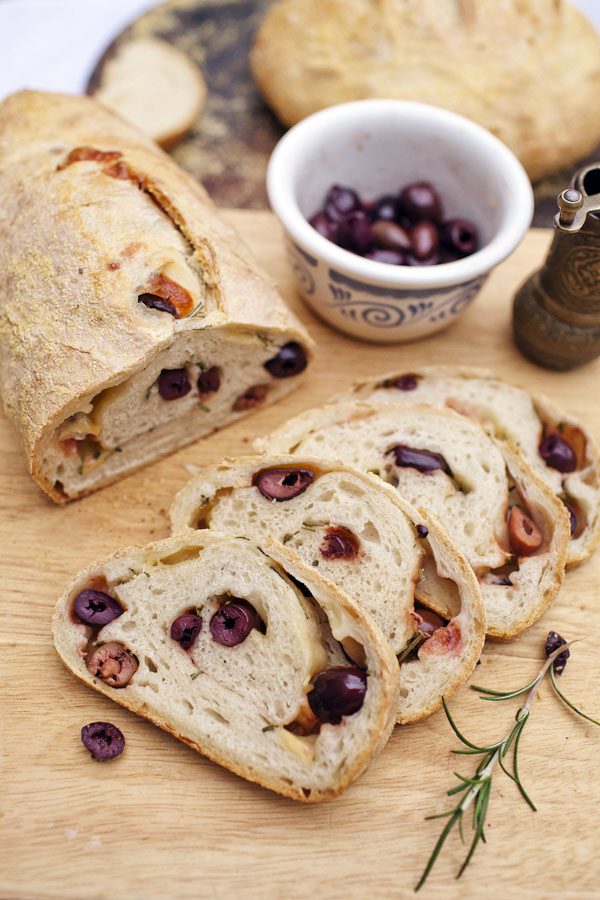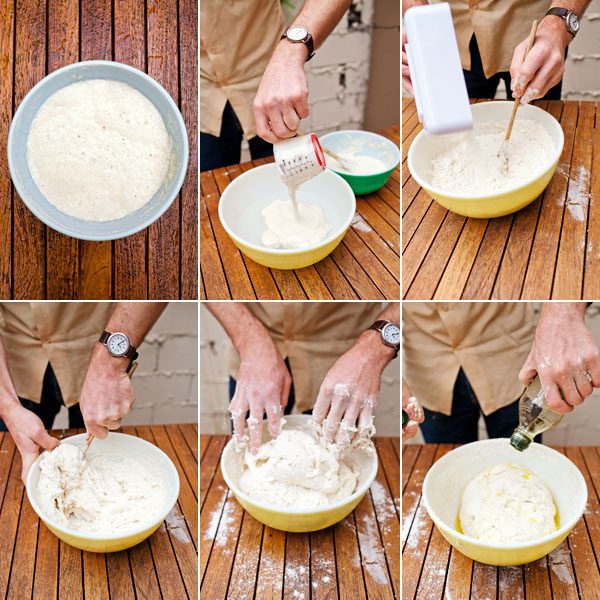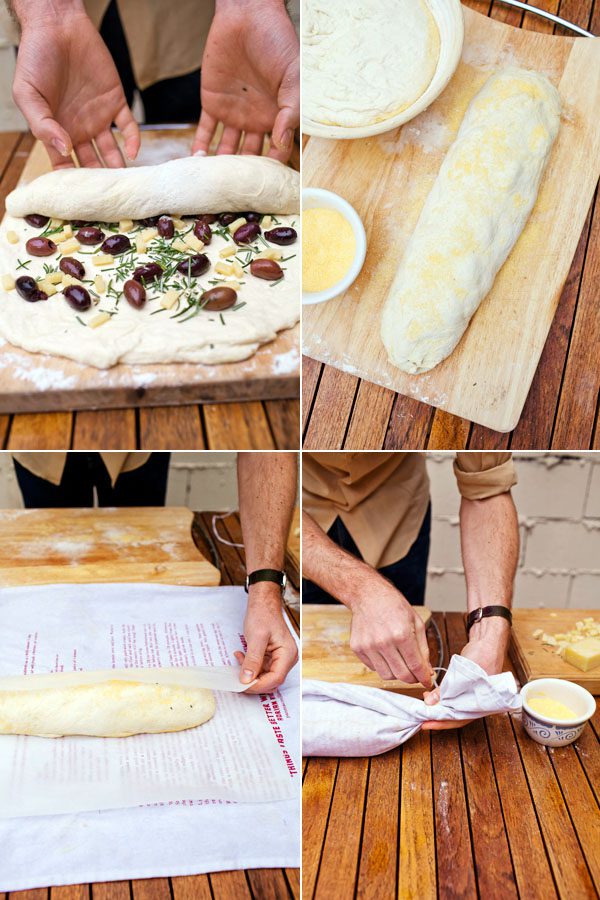
The Dishes
Basic White Sourdough Bread (adapted from Northwest Sourdough)
Prep time: | Cook time: | Serves 10


- 2 cups sourdough starter at 166% hydration (starter is fed with 1 cup water and one cup flour for 166% hydration)- 18oz/510g
- 1 ¾ cups water – 14oz/397g
- 1 – 2 tablespoon of oil
- 6 ½ – 7 ½ cups flour (depending on how wet you want the dough)
- 5 teaspoons salt
- Add the starter to the bowl. Mix with water, oil. Mix with 7 cups of flour.
- Once you have the ingredients in the bowl, mix the dough for about 2 to 3 minutes, then let sit for 20 minutes to autolyse.
- To autolyse dough means to leave the salt out of the dough until after it has been mixed and allowed to set for a while. This resting time allows the gluten strands to absorb water and the enzymes to go to work to condition the dough.
- Autolysis will produce a better, more open crumb. If you want to autolyse try leaving the salt out until the dough has rested 20 minutes. It is also easier to incorporate the salt to the dough if you leave the last cup of flour out and add it at the same time as the salt, that way you can adjust the flour amount if the dough seems too dry.
- After 20 minutes, mix the dough for about one more minute (The total mixing time should never be more than five minutes). Pour a little more olive oil over the dough to prevent it from sticking to the bowl. Now let the dough bulk ferment (this is the term used for the first raising of the dough while it is still in it’s bulk form). Bulk fermentation is variable depending on what your sourdough starter’s proof is. In cool weather, it can safely sit over night. In warmer weather, though, it is better to let it sit for a few hours untl you can poke it with your finger and the dough doesn’t bounce back immediately.
- Allowing the dough to bulk ferment or proof too long will cause the gluten to start breaking down and the dough to get “gluey”. When you bake overfermented dough it will spread apart, have a ghostly whitish color and look glazed like porcelain, it will also be dense.
- When the dough is completely done bulk fermenting, Push the dough down in the bowl until it is deflated, then pour the dough out on the table, which has been sprinkled lightly with flour, and knead it just enough to gather into a ball. Then divide the dough in half or thirds,and shape each one into the the general form you wish it to be- (boule,batard,baguette,etc).
- For the Rosemary, olive, and Parmesan loaf: Follow this recipe, roll out half of the dough into a flat, rectangular shape. Sprinkle the flat surface evenly with olives, rosemary, and Parmesan. Roll the dough like a scroll, and let it rise again. Using a floured tea-towel as we’ve done here will help it maintain its shape while it rises.
- Bake the bread for 35-45 minutes at 250 degrees Celsius. Turn the loaf around half way through baking so that it browns evenly. While baking the crust that begins to form on dough can make it harder for the loaf to rise. Spraying the oven and dough with water creates steam. This keeps the outer skin of the loaf moist and flexible, and helps it rise to its maximum volume with a good shape. Steam also encourages starch granules on the surface of the loaf to fully gelatinize, which gives the crust its crispy texture. When the loaf is golden brown and sounds hollow when knocked with a wooden spoon, it should be ready.
This entry was posted in Sides, Snacks, The DIshes and tagged olive, parmesan, rosemary, sourdough, starter. Bookmark the permalink.
← Gujeolpan (구절판) Arancini →
← Gujeolpan (구절판) Arancini →
